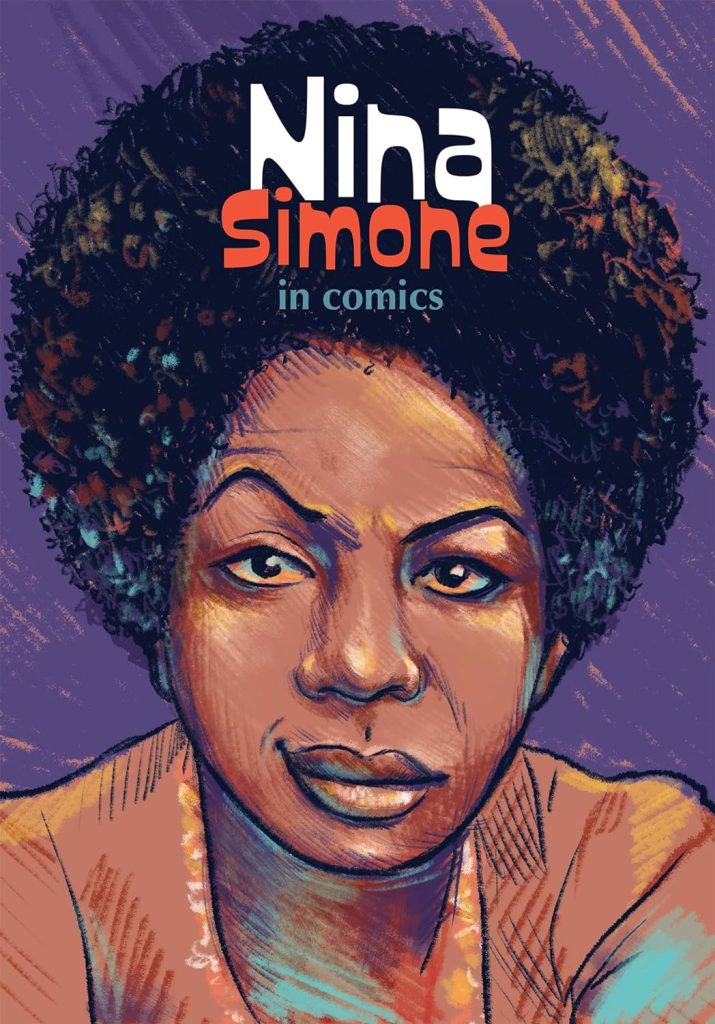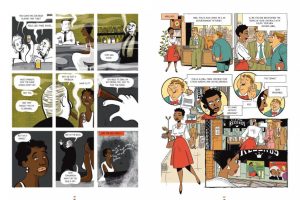Review by Frank Plowright
To date all graphic novels spotlighting musicians in the In Comics series have dealt with artists whose careers began in the 1960s or 1970s, so the inclusion of Nina Simone is groundbreaking for moving the starting point back a decade.
As with others in the series, this is a chronological progression through a life and career in short chapters drawn by assorted artists from Sophie Adriansen’s text, separated by background essays, this time also provided by Adriansen. Disappointingly, there’s no credit for translation from French. Previous volumes haven’t addressed this properly, yet the English text flows naturally, and whoever’s responsible has not only cured a recurring problem, they’ve elevated the quality.
For those not intimately familiar with Simone’s achievements, the first surprise may be to learn her known name is a stage alias for Eunice Waymon, adopted so her religious mother didn’t find out she was playing the devil’s music to fund her classical music studies. She was recognised as a musical prodigy from a young age, and was only slightly older when first encountering entrenched racism. As well illustrated by Samuel Figuière, her parents were made to move from their front row seats at a recital she was giving when a white couple arrived. Sadly, racist incidents would prove a common accompaniment to her career, but a stubborn personality, knowing her mind and a confidence in her abilities overcome some problems, and initially considering a recording career a sideline is a further asset. Unfortunately, this wasn’t always enough to stop her being ripped off.
Unusually for the series, it’s almost a different artist for every chapter, and it’s a superb selection. Anne Royant draws the opening and closing sections, and as ever, the styles range from figurative realism to cartooning. The sample art shows Mademoiselle Caroline’s evocative rendition of a 1950s nightclub and the superb cartooning of François Foyard, but allowing for the different approaches, there’s no poor art in this book.
Simone’s career takes off through pulling an audience in Philadelphia nightclubs, and then doing the same in New York, and becomes stratospheric after the reviews and word of mouth following a single large gig. Having endured indignities and worse just on the basis of skin colour, Adriansen shows how it generated an inner strength, and when the opportunity came, Simone spoke loud and ensured every album featured at least one song calling out social injustice. That, though, eventually had repercussions and took a toll.
Adriansen hits both the highlights and lowspots of Simone’s life, not sparing her occasionally poor judgement, one moment of exceptional stupidity, and a lifelong talent for choosing the wrong people to be around her. Isolating a single incident, although she didn’t write My Baby Just Cares For Me, the song she’s now best known for, her best known performance is on an album she unknowingly signed away the rights to, so earned nothing from. The ups and downs make for compelling reading about a constantly interesting person. It’s the best of the series to date.





